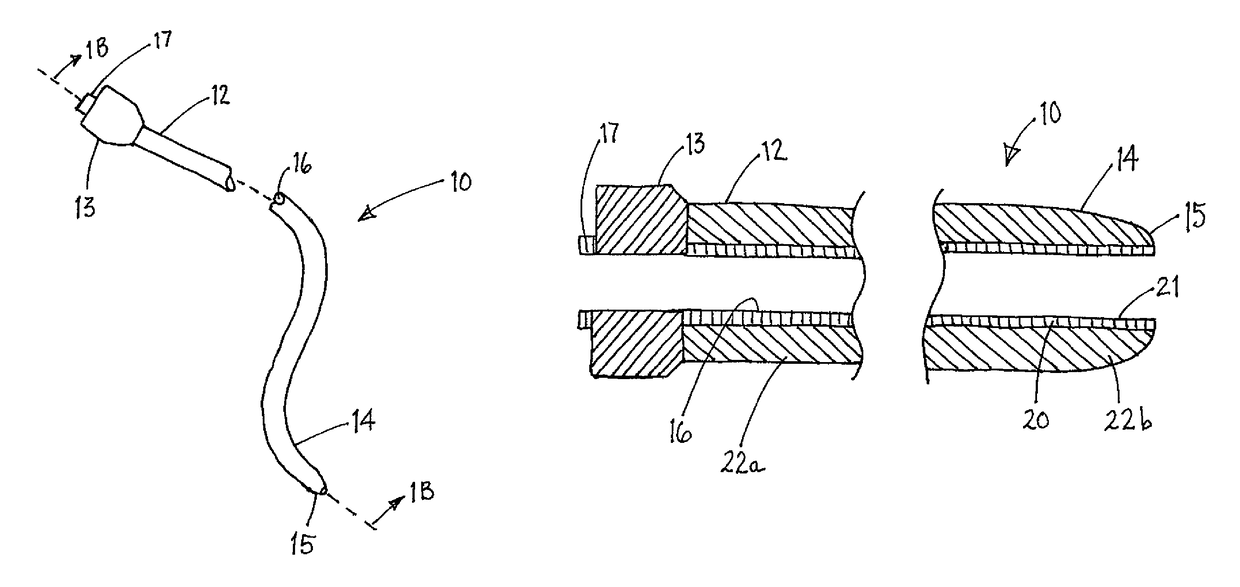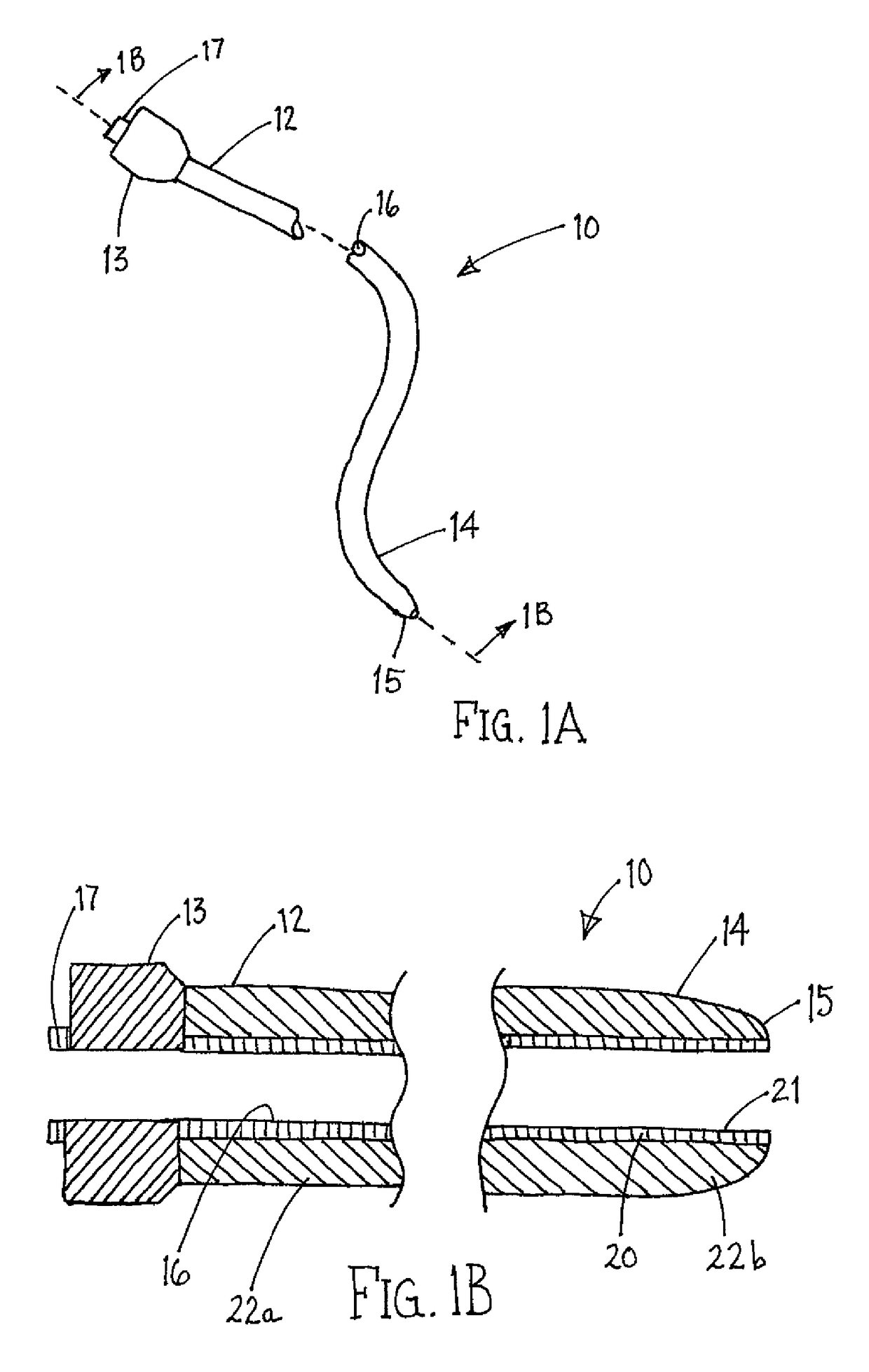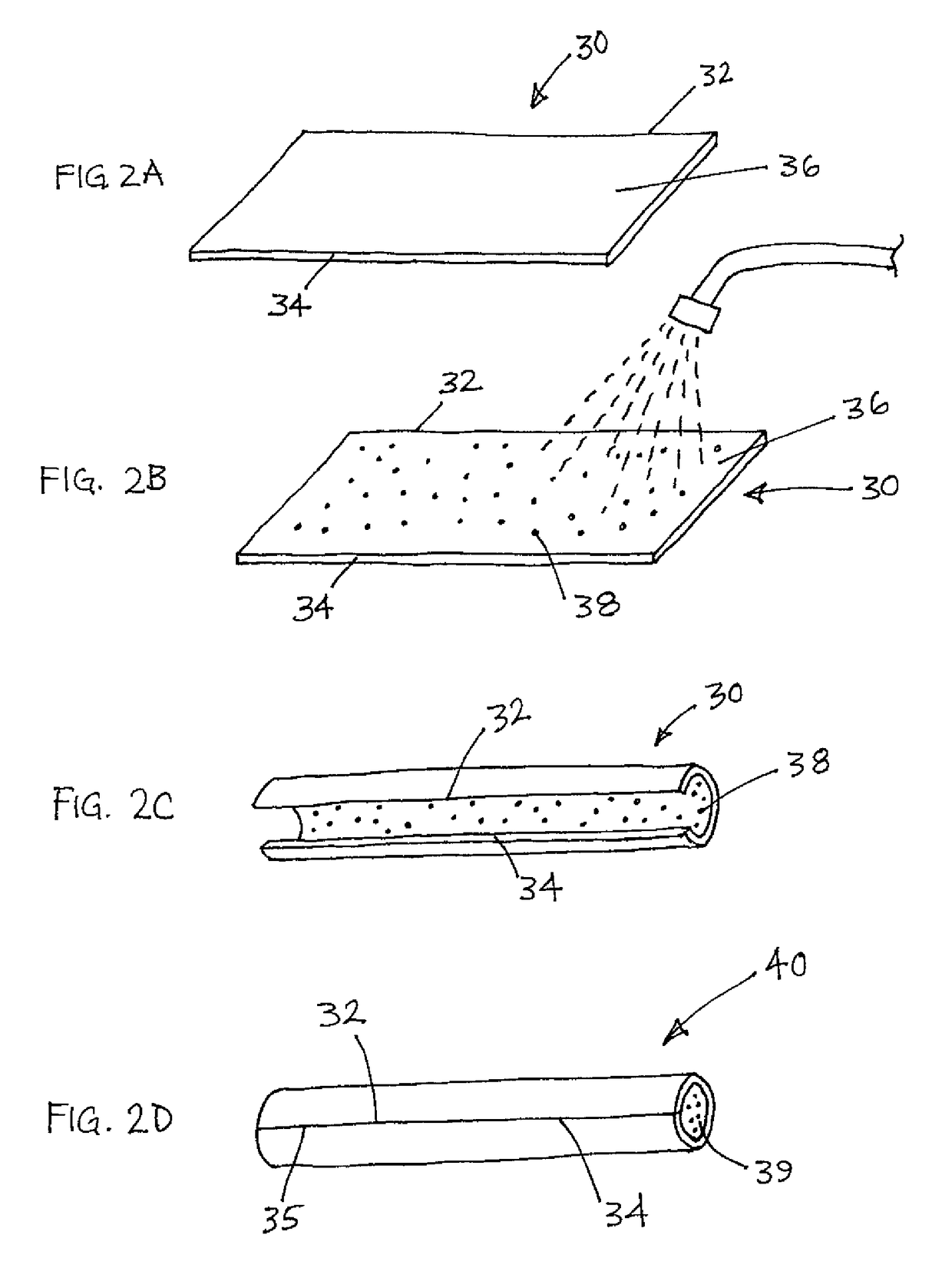Catheters with lubricious linings and methods for making and using them
a technology of lubricating linings and catheters, which is applied in the direction of other medical devices, medical preparations, synthetic resin layered products, etc., can solve the problems of affecting the performance of catheters, and requiring a large amount of materials to be applied, so as to improve the cross-linking and/or adhesion of coatings.
- Summary
- Abstract
- Description
- Claims
- Application Information
AI Technical Summary
Benefits of technology
Problems solved by technology
Method used
Image
Examples
Embodiment Construction
[0080]Turning to the drawings, FIGS. 1A and 1B show an exemplary embodiment of an apparatus 10 for accessing a body lumen (not shown) and / or for delivering one or more fluids, agents, and / or instruments (also not shown) within a body lumen. In exemplary embodiments, the apparatus 10 may be a guide catheter, a procedure catheter, a sheath, an imaging device, or other tubular device sized for introduction into a body lumen, such as a vessel within a patient's vasculature, a passage within a patient's gastrointestinal tract, urogenital tract, reproductive tract, respiratory tract, lymphatic system, and the like, as described further below.
[0081]Generally, the apparatus 10 is an elongate tubular member including a proximal end 12, a distal end 14 sized for insertion into a body lumen, and a lumen 16 extending between the proximal and distal ends 12, 14. Optionally, the apparatus 10 may include one or more additional lumens (not shown), which may be disposed concentrically around or side...
PUM
| Property | Measurement | Unit |
|---|---|---|
| diameter | aaaaa | aaaaa |
| length | aaaaa | aaaaa |
| length | aaaaa | aaaaa |
Abstract
Description
Claims
Application Information
 Login to View More
Login to View More - R&D
- Intellectual Property
- Life Sciences
- Materials
- Tech Scout
- Unparalleled Data Quality
- Higher Quality Content
- 60% Fewer Hallucinations
Browse by: Latest US Patents, China's latest patents, Technical Efficacy Thesaurus, Application Domain, Technology Topic, Popular Technical Reports.
© 2025 PatSnap. All rights reserved.Legal|Privacy policy|Modern Slavery Act Transparency Statement|Sitemap|About US| Contact US: help@patsnap.com



